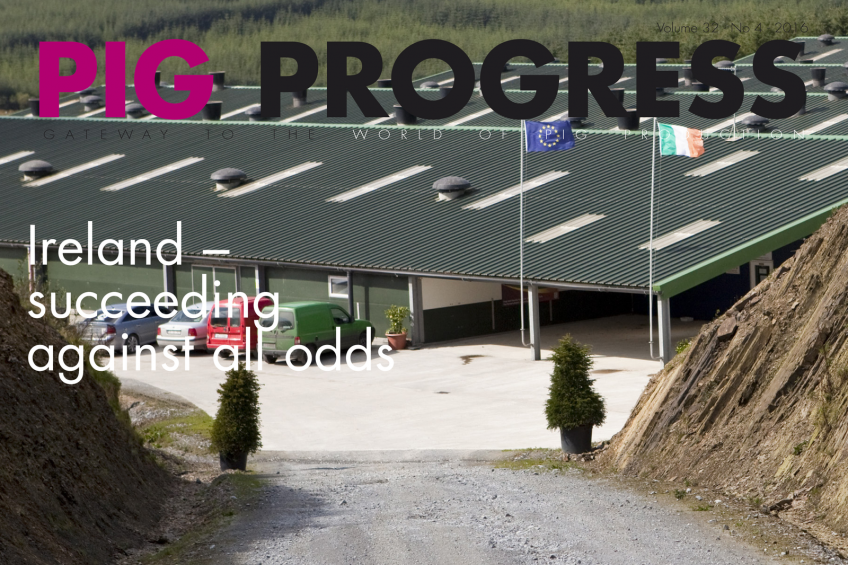Pig Progress 4: Ireland, nutrition & gut health

Preparing for the upcoming pig health events in Ireland, the fourth issue of Pig Progress zooms in on the Irish pig industry, but also touches on the latest developments with regard to pig nutrition and gut health.
First of all – the International Pig Veterinary Society (IPVS) Congress will soon come to Ireland, which is why Pig Progress takes a look at what has been going on in Ireland’s pig industry recently. Page 16
And what to expect at the IPVS Congress, which is jointly organised with the European Symposium for Porcine Health Management (ESPHM) this year? We interviewed this year’s IPVS president Pat Kirwan to get a sneak preview. Page 20
Detecting pig health problems quicker
With a veterinary symposium taking centre stage, the magazine contains quite a few articles that relate to animal health. How about recent research carried out in Belgium, where futuristic method of sensors and algorithms is used to ‘calculate’ when a pig has a health problem simply by monitoring feeding behaviour (or the lack thereof). Page 8
Gut health: vaccination and pre-weaning solutions
Gut health takes a prominent place in this edition. That is why there is both attention to the veterinary as well as the nutritional side of the gastro-intestinal tract. The how and what around vaccination against ileitis is explained in a comprehensive overview on page 13.
A different approach to gut health is taken in an article on pre-weaning nutrition. How feeding the youngest piglets with supplementary dairy products has an impact, not only before weaning but also later in life, is explained in an article as from page 32.
Unwanted feed ingredients: Mycotoxins and phytate
From good gut health it is only a small step to unwanted feed ingredients, think for instance of mycotoxins. These ingredients are harmful in itself, but also may open the doors for other pathogens to do their detrimental work more easily. Page 38
Animal nutrition company Biomin recently launched mycotoxin occurrence. The exact effects of the latest occurrences on the pig industry are summarised in an article on page 30.

Nutrition-wise, there is also news around the way phytase helps to reduce the effects of phytate. The breakdown of the antinutritional factor phytate usually goes in steps and it’s not said that breakdown products of phytate are immediately harmless, recent insights show. Page 27
Trace minerals and computerised feeding
More nutrition content as there is also attention for organic trace minerals. What role they play and what are the latest insights, is conveniently summarised in an article on page 36.
This month’s farm visit takes us to the United Kingdom, where correspondent Stuart Lumb took a look at a modern farm at Harper Adams University, near Newport, Shropshire. Here computerised feeding trials are being done, achieving high accuracy using Roxell feeders. Page 24
Columns on light and NIR spectroscopy
As for columns – John Gadd moves to his favourite subject of light, and has started a series on how too little or too much light can mean a lot for sows. Page 10
In addition, Casey Bradley zooms in on the development of Near Infrared spectroscopy and its effect on analysing feedstuff quality. Page 42
To read all the articles in the May edition of Pig Progress, go to the magazine overview page and sign up with your current website login.











